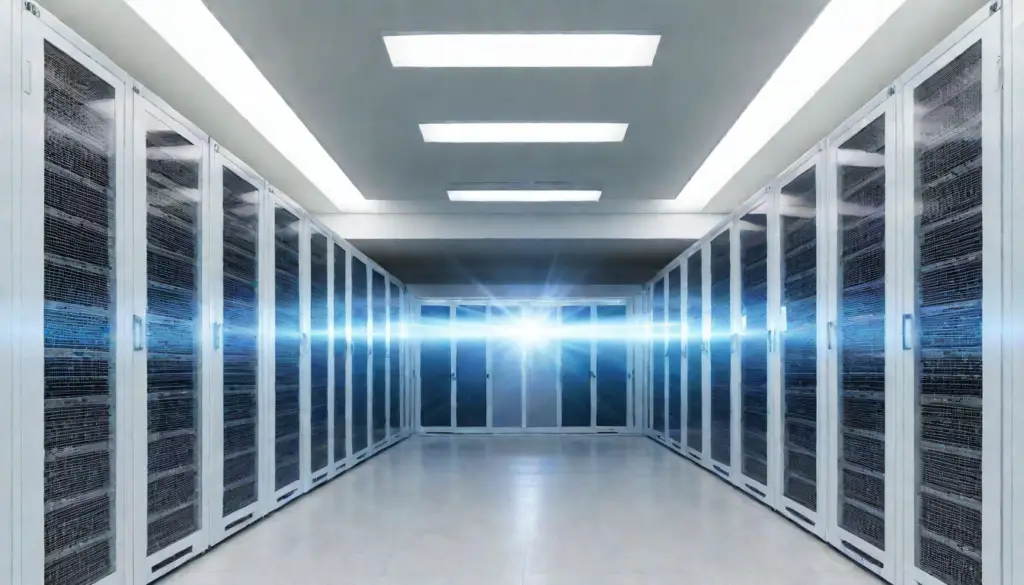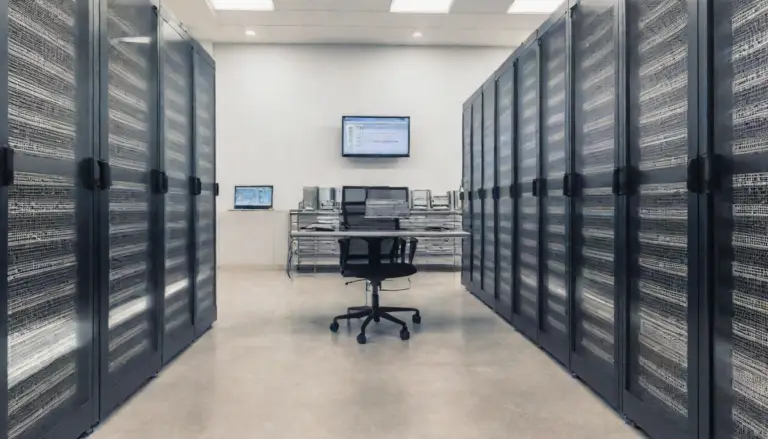Data centers have been around for years, but very few function optimally. Your organization needs an efficient data center tailored to your unique needs. From hardware to design, there are many considerations when setting up your data center.
In this guide, we’ll review what you need to know about setting up your data center.
What is a Data Center?
A data center is a concentrated location of computing and networking equipment. Its purpose is to collect, store, process, and distribute vast amounts of data. Data centers have been around since the beginning of computers, but they have drastically changed over the years. Modern data centers centralize an organization’s shared IT equipment and operations. They’ve moved from highly-controlled physical infrastructures to hybrid and cloud-based infrastructures that support several applications and workloads.
Pillars of a Data Center
Data centers perform three primary functions: tracking, procedures, and physical principles.
Tracking
Data centers must track temperature, airflow, humidity, and equipment characteristics in real-time. Typically, Data Center Infrastructure Management (DCIM) tools collect and distribute this information via sensors spread out through the facility. Highly advanced data centers rely on radiofrequency identification (REID) to label each piece of IT equipment so that you can track each status individually. Essentially, DCIM is like your dashboard. It shows the information on your equipment’s performance and temperature in real-time.
Procedures
Equipment in data centers is ever-changing, and not in ways that are easy to predict. The best facilities have established procedures based on best practices for design, deployment, maintenance, and equipment decommissioning. The data center tracking makes it far easy to implement your procedures accurately. The most advanced centers can combine the data with machine learning algorithms to automate data center operations.
Physical Principles
A data center’s last primary function is to apply physical principles to correctly deliver cooling and power to the facility. Using engineering simulation tools for data design and operations allows it to tack the data obtained from tracking and enter it into software that distributes power, heat, and airflow. Properly calibrated computer models with real data center measurements “can be used to predict the effects of changes in IT equipment configurations on airflow, temperature, efficiency, reliability, available capacity, and cost without having to move or install that equipment.” Essentially, engineering simulation tools can give an analysis of the risks and costs of operational plans.
What is the role of a data center?
Data centers should support business applications. Based on the three pillars above, some of the most common functions a data center completes to support business applications include:
- Productivity applications
- Enterprise resource planning (ERP)
- Machine learning, artificial intelligence, and big data analytics.
- File sharing and email.
- Communications and virtual desktops.
What equipment is needed to run a data center?
Network equipment
- Switches
- Routers
- Modems
- Firewalls
- Cables
Core computing equipment
- Servers
- Server racks
- Desktops
Storage equipment
- Backup storage resources
- Hard drives
- Tape drives
Power and cooling infrastructure
- Cooling towers
- Environmental monitors
- Airflow plans
- Humidifiers
- Power generators
- An uninterrupted power supply system
Input/output devices
- Keyboards
- Printers
- Mouses
- Scanners
- Cable management supples
How do I set up a data center?
Setting up a data center may seem like a daunting task, but the key is to break down the process into manageable sections. Here are the different areas you must address when setting up a data center:
Backup
Backup is crucial for your data center. First, determine which level of backup power you need for your data center. There are generally three tiers. A Tier-2 data center has two USPs (uninterruptible power supply). They run parallel, with one taking over if the other fails. A Tier-3 has three USPs, and a Tier-4 has four USPs.
Determine Your Technology Requirements
Base your IT power infrastructure on your IT workload. In this case, “power” refers to the networking equipment, IT servers, and storage you’ll need.
- According to Computer Weekly, “Server arrangements help to distribute the power and load by reconfiguring the load arrangements to work in tandem with the power and cooling requirements.”
- Energy optimizers create an intelligent infrastructure that responds dynamically to your workload to provide maximum efficiency.
- Maintain a dust-free, water-free environment to ensure IT power infrastructure.
Adaptive Architecture
Focus on the scalability and flexibility of your system. The three layers of adaptive architecture are:
- IT infrastructure: Servers, storage, networking, power, and cooling equipment.
- Service: Mail or print services.
- Applications: ERP or business applications.
Security
Security is critical for reducing the chances of cyber and physical attacks. You must have proper physical security in terms of access controls, on-site guards, and electronic surveillance, as well as the necessary cybersecurity measures to keep your data center protected.
Equipment Arrangement
For optimal performance, arrange your data center equipment strategically. Considerations for an arrangement include:
- Placing the UPS systems away from the server. This protects it from the electromagnetic field.
- Keeping the power distribution unit near the IT load, attached to the rack if possible.
- Maintain zero PD between earth and neutral into the load to prevent a noise that will boot the system.
- Deploy blade architecture.
- Consider the cooling requirement when designing the IT power infrastructure.
- Keep a minimum gap of 60cmc between the power and data centers to prevent creating an electromagnetic field that will impair data center functioning.
Energy Efficiency
Efficient data centers must be cooled and correctly humidified. To improve energy efficiency:
- Use the free cooling methodology.
- Maintain the right environmental conditions for the best functioning of hardware.
- Arrange hot and cold aisles so that the “”cold”” aisles have perforated tiles and raised floors.
- Consider a uniform load distribution across the data center for cooling.
- Refresh servers every two years following Moore’s Law to control power consumption and limit heat density. Equip your IT power infrastructure for this refresh cycle.
Hybrid
Previously, data center experts focused heavily on hardware and a physical location. However, the cloud has now expanded, allowing you to host many applications and data. For some organizations, it’s still essential to keep business-critical applications at a private data center. Hybrid cloud environments allow you to meet the dual needs of public cloud and private data centers and will be something to consider when creating your data center.
Building your data center requires upfront planning and careful thinking, but it is a doable process. By focusing on the checklist above, you can create an efficient and productive data center for your organization. For more information about data centers, IT support, or other business support, Teksetra is here to help. Contact one of our technology experts to learn more about how we can help you with your data center.




